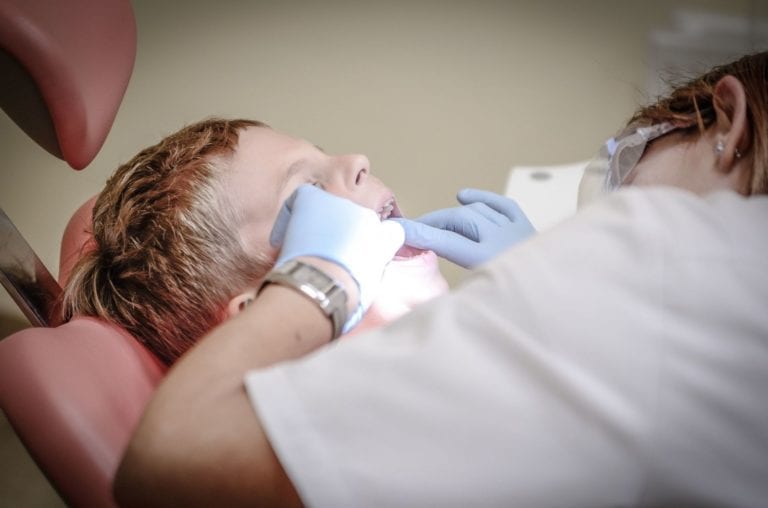249 Danforth Avenue, Toronto, ON, M4K 1N2
Should You Treat Cavities At Home?
Posted: January 23, 2019
What Are Cavities?
Cavities (also called caries or tooth decay) are small holes or openings that develop on the tooth surface. These permanently damaged areas are caused by bacteria that create acids out of sugar. The teeth are breaking down and building up as the acidity level goes up and down in the mouth. The bacteria which cause cavities thrive when the acidity level drops down to 5.6.
In fact, bacteria form plaque — a sticky film on your tooth. The plaque contains acids which demineralize enamel, i.e., remove minerals from a protective coating of your teeth. That’s how tiny holes occur. The acid damage gradually spreads and ruins the enamel. Once it reaches the underlying dentin layer, a cavity starts forming in the tooth.

Tooth decay is not a painful nuisance that can go away on its own. It requires a treatment by a professional who will remove the damaged structure and repair the damage. This is the only way to put an end to a toothache in most cases.
However, what if your dentist will not be able to see you in the next few days? Meanwhile, the pain gets severe and you need a solution and relief right now. This raises the question: Can I heal the cavity pain by myself at home?
How Do Dentists Detect Cavities?
There are several different methods dentists use to identify cavities. A visual inspection is the most obvious and most common way. Enamel destruction, severe discoloration, and holes in the teeth are some of the visible cavity symptoms.
These can be seen with the naked eye. You may also experience some kind of discomfort like a sharp pain when eating something cold or hot. Also, the cavities can be detected with an intraoral camera. Most dental offices have such a camera. It takes images of the teeth, which enables the dentist to so see what happens inside your teeth.

Your dentist can also detect cavities by means of a dental explorer or dental probe. This tool actually helps the dentists check tooth crevices for cavities. The explorer will sink into a cavity if any.
This way your dentist will identify the areas with the breached enamel. That’s a sign of a tooth cavity. Another way of identifying cavities is by way of dental x-rays. It is particularly helpful in detecting a cavity between the teeth.
How To Reverse Early Cavities?
Let’s assume you’re feeling a sharp tooth pain when trying to eat or biting down. Chances are high that the pain is caused by a cavity. You can’t be 100 percent sure, though.
Let’s face it, only a dentist is able to diagnose cavities with certainty. Yet, you can detect the early symptoms of caries. All you need to do is stand in front of a mirror and take a closer look at your teeth. The white spots on teeth usually indicate that the enamel is damaged or weakened. That increases the risk of cavities.

It is possible to reverse cavities in the initial stage by remineralizing the tooth. That will make its enamel stronger. For this purpose, you can make use of mouth rinses or gingivitis mouthwashes with antibacterial properties. Combine it with toothpaste that contains calcium and fluoride. Ask your dentist for advice while waiting for the scheduled appointment. It is always good to hear what a professional recommends.
Treating Pre-Cavities At Home
Remember that you cannot get rid of a cavity once it penetrates the dentin. Yet, there are home remedies that help in preventing a cavity or treating “pre-cavity” before it develops. Our favourite is the use of Xylitol candies or gum. Xylitol is a naturally occurring sugar alcohol found in most plant material, including many fruits and vegetables. It is usually extracted from birch wood.
Xylitol is added to some chewing gums and other oral care products to prevent tooth decay and dry mouth. Xylitol tastes sweet but, unlike sugar, it is not converted in the mouth to acids that cause tooth decay. It reduces levels of decay-causing bacteria in saliva.
Xylitol inhibits the ability of bacteria to adhere to tissues in the mouth and cannot be metabolized by bacteria, so it drastically slows down the process that creates harmful enamel-eating acids. Xylitol can be toxic to dogs so you must be careful using it around your pets.
What Cavity Treatment Options Are Available?
Luckily, there are many options to treat cavities on teeth. What treatment option a dentist will choose mainly depends on how far along the tooth decay is. Note that the severity of the cavity usually dictates the treatment.
3 Main Types Of Cavities
- Smooth surface decay
- Pit and fissure decay
- Root decay
Your dentist will probably make a dental filling if there is a hole in the enamel created by a tooth decay that has not yet affected the tooth nerves. After cleaning out the cavity, the dentist will seal up the hole by placing the filling in the tooth. That prevents decay from occurring.
What Is A Root Canal?
What happens in more severe cases? Root canals are a solution for decay that has reached the pulp (inner material of tooth) and damaged tooth nerves. During the procedure that involves the root canal, the dentist removes damaged nerve as well as the pulp or surrounding blood vessels. Your dentist will fill away that area with an endodontic root canal sealant afterward.
What Is A Crown?
A crown is a custom fitted covering that’s placed over the severely infected tooth so as to treat extensive tooth decay in more extreme cases. As a matter of fact, this option has a goal to save a severely affected tooth, actually what’s left of it.

It comes in handy when most of the tooth structure is damaged or lost. Such a tooth requires a large dental filling. That makes it vulnerable to breaking and cracking. After repairing the broken or chipped tooth, the dentist will get it covered with a porcelain or alloy crown. Click here to learn more about dental crowns.
What Is A Tooth Extraction?
Tooth extraction is the last resort and it means the removal of a decayed tooth. Although a tooth extraction seems like an extreme option, it can improve oral and general health. This option prevents infection from spreading and affecting the jaw bone. Keep in mind that it will leave a gap between your teeth. But don’t worry. It can be remedied with help of an implant, partial denture, or bridge.
Stopping Tooth Decay At Home
So, what can we conclude? Yes, it’s possible to halt the tooth decay process and you can do it at home. The key is to remineralize your tooth enamel. However, note that this is only possible in the early stage.
So, make sure to schedule an appointment with our office as soon as possible if you think that you have cavities. We can repair the damage formed by tooth decay if the enamel is destroyed and can help you prevent cavities in the future.
